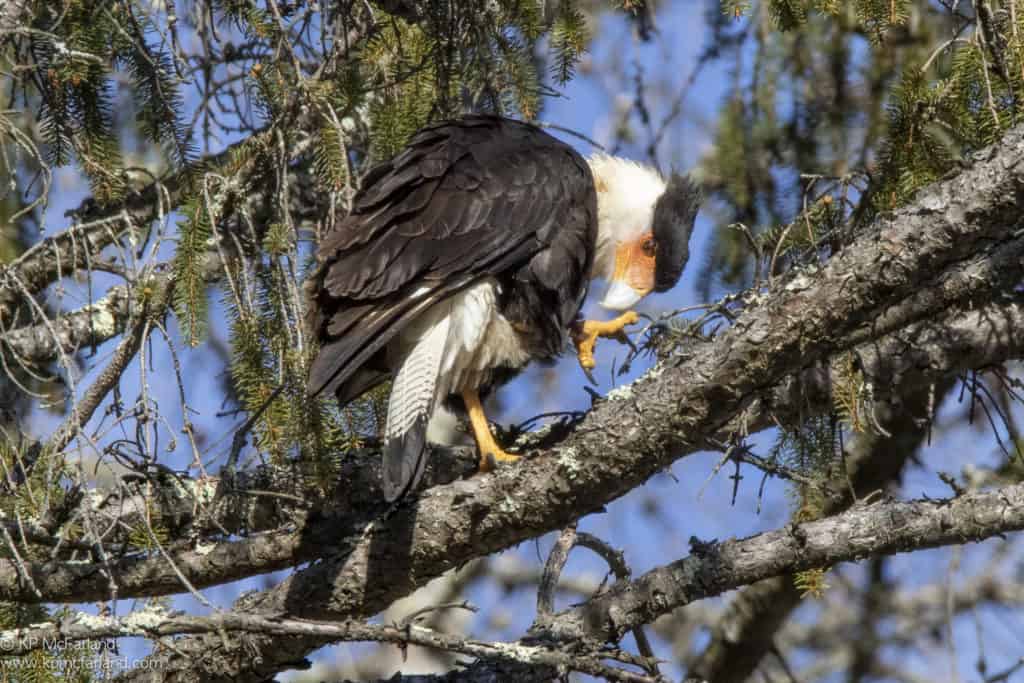
Staff report
People from all over New England flocked to Woodstock last week to catch a glimpse of a rare South American bird.
The bird, a crested caracara, which is native to Cuba, South America and Mexico, was affectionately named “Carl” on the Vermont Birding Facebook group.
It’s unclear what brought the caracara so far north. It was first spotted Wednesday, March 4 by a Pomfret resident. The bird stayed near Billings Farm and Museum in Woodstock, where it was last seen Saturday, March 7.
“Sometimes birds of all species will turn up in places they’re not supposed to be,” said Nathaniel Sharp, a data technician for the Vermont Center for Ecostudies. “That’s up to the individual motivations of the bird that are impossible for us to determine.”
Sometimes birds are thrown off course by climate change and weather patterns, but Sharp said there was no unusual weather and he doesn’t think long-term climate change had an impact.
Sharp said he identified the bird from photos sent to him by a local resident.
“The identification is unquestionable,” he said. “There’s no other bird that looks quite like it.”
The crested caracara is the official bird of Mexico and it is closely related to falcons. The bird looks like a bald eagle, but it’s smaller and has a red beak. They scavenge berries and feed off roadkill and other types of carcasses. The first day it was spotted in the area, it was seen eating a dead skunk, Sharp said.
“That’s one of the things I would guess is keeping this bird around,” Sharp said. “There’s plenty of roadkill in Vermont for it to feed on.”
This wasn’t the first time a Caracara was found in Vermont. A crested caracara was seen in Alburgh in 2018, Sharp said. A caracara was also seen further North in St. George, New Brunswick, Canada in 2017, according to a CBC news report.
“This is definitely the rarest bird I’ve ever seen in Vermont,” Sharp said.
The bird attracted waves of visitors. Martha Paine drove 2½ hours from Massachusetts to see the bird.
“It’s a very beautiful bird,” said Paine, who has been a birder for about 30 years.
“It’s so fun to pack your bags and head out,” she said. “You get more obsessed.”




